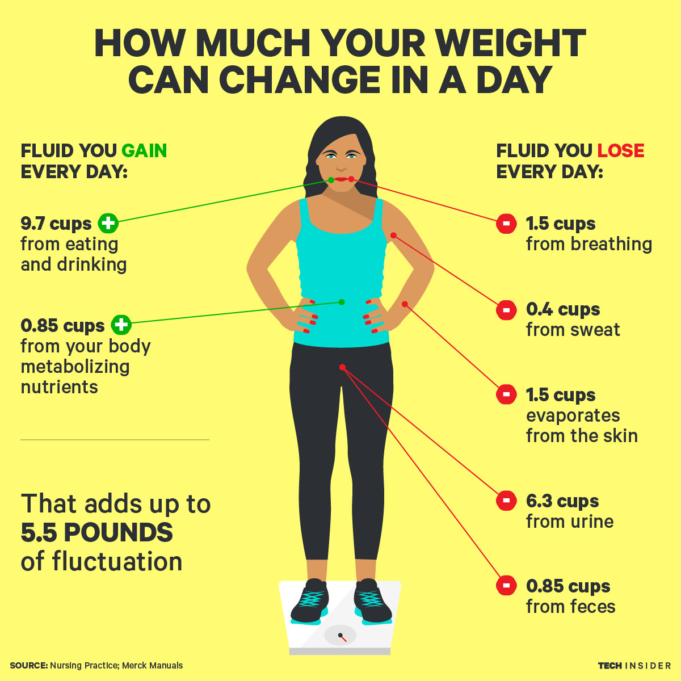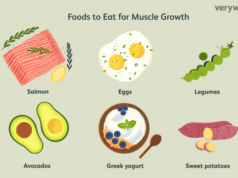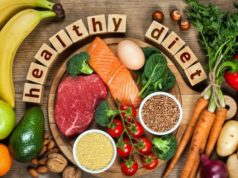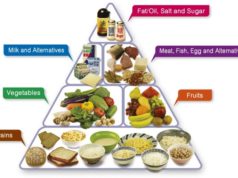How to diet? It’s a question that’s plagued humanity since the invention of the first donut. But fear not, dear reader, for we’re about to embark on a journey to uncover the secrets of healthy weight loss. Forget the fad diets and the quick fixes; this is about building a sustainable relationship with your body and your food.
We’ll explore the different types of diets, delve into the importance of setting realistic goals, and uncover the magic of creating a personalized plan that actually works. So, buckle up, grab your water bottle, and let’s get started on this delicious adventure!
This guide will equip you with the knowledge and strategies to make informed decisions about your diet. We’ll discuss the importance of understanding your body’s needs, setting realistic goals, and making sustainable lifestyle changes. You’ll learn how to create a personalized diet plan that incorporates nutrient-rich foods, promotes portion control, and encourages regular exercise.
We’ll also address common diet myths and debunk misconceptions that can derail your progress. Get ready to shed those pounds and embrace a healthier, happier you!
Understanding Dieting
Dieting is a popular topic, often associated with weight loss, but it’s more than just shedding pounds. It’s about making conscious choices about what you eat and drink to improve your overall health and well-being.
Types of Diets
Different diets cater to various needs and preferences. Here are a few examples:
- Ketogenic Diet:This diet emphasizes high fat intake and drastically reduces carbohydrates, forcing your body to burn fat for energy. This approach can lead to rapid weight loss but may not be suitable for everyone.
- Mediterranean Diet:This diet focuses on consuming fruits, vegetables, whole grains, legumes, nuts, and olive oil. It’s known for its heart-healthy benefits and emphasis on fresh, unprocessed foods.
- Intermittent Fasting:This approach involves alternating periods of eating and fasting, rather than restricting specific foods. Different fasting patterns exist, such as the 16/8 method, where you fast for 16 hours and eat within an 8-hour window.
Benefits and Risks of Dieting
Dieting can offer potential benefits, but it’s crucial to approach it thoughtfully.
- Potential Benefits:
- Weight Loss: Dieting can help achieve a healthy weight, reducing the risk of chronic diseases.
- Improved Health: Some diets can lower blood pressure, cholesterol levels, and improve blood sugar control.
- Increased Energy: Certain diets, like the Mediterranean diet, can boost energy levels and improve overall well-being.
- Potential Risks:
- Nutrient Deficiencies: Restrictive diets may lead to deficiencies in essential vitamins and minerals.
- Eating Disorders: Unhealthy dieting practices can contribute to the development of eating disorders.
- Yo-Yo Dieting: Rapid weight loss followed by weight gain can negatively impact metabolism and overall health.
“It’s important to consult a healthcare professional before starting any diet, especially if you have underlying health conditions.”
Setting Realistic Goals
Let’s face it, we all want to see those pounds melt away like a popsicle on a hot summer day. But, just like that popsicle, unrealistic goals can leave you feeling deflated and disappointed. Setting realistic weight loss goals is the key to sustainable success and a happier, healthier you.
Calculating a Healthy Calorie Deficit
To lose weight, you need to consume fewer calories than you burn. This is known as a calorie deficit. But how do you figure out how many calories to cut?
- Start with your Basal Metabolic Rate (BMR):This is the number of calories your body burns at rest. You can calculate your BMR using online calculators or consult a healthcare professional.
- Factor in your activity level:Your BMR is just the starting point. Your activity level plays a crucial role in your overall calorie expenditure.
- Create a deficit:Once you know your daily calorie needs, create a deficit of 500-1000 calories per day. This is a healthy and sustainable rate of weight loss.
For example, if your daily calorie needs are 2000 calories, aim to consume 1500-1600 calories per day.
Creating a Diet Plan
Creating a personalized diet plan is like building a custom-made suit – it needs to fit you perfectly. A good diet plan is not about deprivation, but rather about making smart choices that fuel your body and support your goals.
Crafting a Personalized Diet Plan
The first step is to understand your unique needs. Consider factors like your current eating habits, activity level, and any dietary restrictions or allergies. Once you have a clear picture of your starting point, you can begin to create a plan that works for you.
- Assess your current diet: Take a look at what you typically eat over a week. Be honest – no judgment here! This will give you a baseline to work with.
- Set realistic goals: Focus on making gradual changes, rather than drastic overhauls. Aim to reduce your calorie intake by 500-1000 calories per day, or increase your physical activity. Remember, slow and steady wins the race!
- Choose nutrient-rich foods: Focus on whole, unprocessed foods like fruits, vegetables, lean protein, and whole grains. These foods are packed with vitamins, minerals, and fiber, which will keep you feeling full and satisfied.
- Plan your meals and snacks: Don’t leave your meals to chance! Plan out your meals and snacks in advance to avoid impulsive choices. This can be as simple as writing down what you’ll eat each day, or creating a weekly meal plan.Dieting doesn’t have to be a torturous journey through bland salads and endless counting. If you’re looking for a delicious and sustainable approach, check out what’s mediterranean diet , where the focus is on fresh fruits, vegetables, whole grains, and healthy fats.It’s like a vacation for your taste buds, and your waistline might thank you too!
- Practice portion control: Learn how to estimate portion sizes and use measuring cups and spoons to help you stay on track. Don’t be afraid to use smaller plates and bowls to trick your eyes into thinking you’re eating more.
- Stay hydrated: Drink plenty of water throughout the day. Water helps you feel full, boosts your metabolism, and can even help you reduce your overall calorie intake.
- Listen to your body: Pay attention to your hunger and fullness cues. Eat when you’re hungry, and stop when you’re satisfied. Don’t force yourself to eat if you’re not hungry, and don’t feel pressured to clean your plate.
The Power of Variety
A diverse diet is like a well-rounded orchestra – each instrument plays a crucial role in creating a harmonious symphony. Incorporating a variety of nutrient-rich foods ensures you get a wide range of vitamins, minerals, and antioxidants. This helps to support your overall health and well-being.
“Eat the rainbow!”
Think of it this way: each color of fruit and vegetable represents a different set of nutrients. By eating a variety of colors, you’re essentially giving your body a diverse range of essential nutrients.
Portion Control and Meal Frequency
Imagine your stomach as a small, but mighty, container. You want to fill it with nutrient-rich foods, but not overstuff it. Portion control is about eating the right amount of food to satisfy your hunger without overdoing it.
“Eat less, move more!”
This classic saying holds true! While portion control plays a crucial role, meal frequency can also be a powerful tool. Eating smaller, more frequent meals throughout the day can help regulate blood sugar levels, prevent overeating, and boost your metabolism.
Incorporating Exercise
You’ve got your diet down, you’re eating healthy, and you’re feeling good. But did you know that adding regular exercise to your routine can supercharge your weight loss journey and make you feel even better? It’s like adding the finishing touch to a delicious meal – it takes everything to the next level!
Dieting is a marathon, not a sprint. You gotta find a plan that fits your lifestyle, and that doesn’t involve eating your feelings (unless it’s a plate of nachos, then it’s okay). But if you’re considering the keto diet, you might want to check out is keto diet safe before diving headfirst into all that butter and bacon.
Just remember, the best diet is the one you can stick to, so choose wisely, my friend, and may your journey to a healthier you be filled with deliciousness!
Types of Exercises to Complement a Diet Plan
Exercise is like a versatile tool – you can use it in different ways to achieve your goals. Here’s a look at some types of exercises that can work wonders with your diet:
- Cardiovascular Exercise:Think of this as the heart of your fitness routine. Activities like running, swimming, cycling, and dancing get your heart pumping and burn a significant amount of calories.
- Strength Training:This involves using weights, resistance bands, or your own body weight to build muscle. It not only helps you sculpt a toned physique, but also boosts your metabolism, which means you burn more calories even when you’re resting.
- High-Intensity Interval Training (HIIT):This involves short bursts of intense exercise followed by brief recovery periods. It’s a great way to maximize your calorie burn in a short amount of time.
- Yoga and Pilates:These practices combine strength, flexibility, and balance, and can be a great way to improve your overall fitness and well-being.
Relationship Between Exercise Intensity and Calorie Expenditure
The intensity of your exercise directly affects how many calories you burn. Think of it like this:
The harder you work, the more calories you burn.
For example, a brisk walk will burn fewer calories than a jog, and a jog will burn fewer calories than a sprint.
Maintaining Motivation and Consistency
Dieting can be a marathon, not a sprint. It’s easy to get excited at the start, but staying motivated over the long haul can be a challenge. Just like a marathon runner needs to pace themselves and fuel their body, you need to find strategies to keep your willpower strong and your spirit high.
Tracking Progress and Celebrating Milestones
Tracking your progress is essential for staying motivated. Seeing how far you’ve come can be a powerful motivator, especially when you hit those inevitable plateaus.
- Keep a food diary:This helps you identify patterns in your eating habits and make adjustments as needed. It can also be a great tool for tracking your calorie intake and ensuring you’re staying within your daily limits.
- Take progress photos:Don’t be afraid to snap some before-and-after shots. Seeing the physical changes can be a huge boost to your confidence.
- Celebrate milestones:Reward yourself for reaching your goals, no matter how small they may seem. This could be anything from buying yourself a new workout outfit to enjoying a cheat meal (in moderation, of course!).
Overcoming Common Challenges and Setbacks, How to diet
Everyone experiences setbacks on their weight loss journey. The key is to learn from them and keep moving forward.
- Don’t beat yourself up:If you slip up, don’t let it derail your entire plan. Just get back on track as soon as possible.
- Identify your triggers:What situations make you more likely to overeat? Once you know your triggers, you can develop strategies to avoid them.
- Find a support system:Surround yourself with people who are supportive of your goals. This could be friends, family, or a support group.
Consulting with Professionals: How To Diet
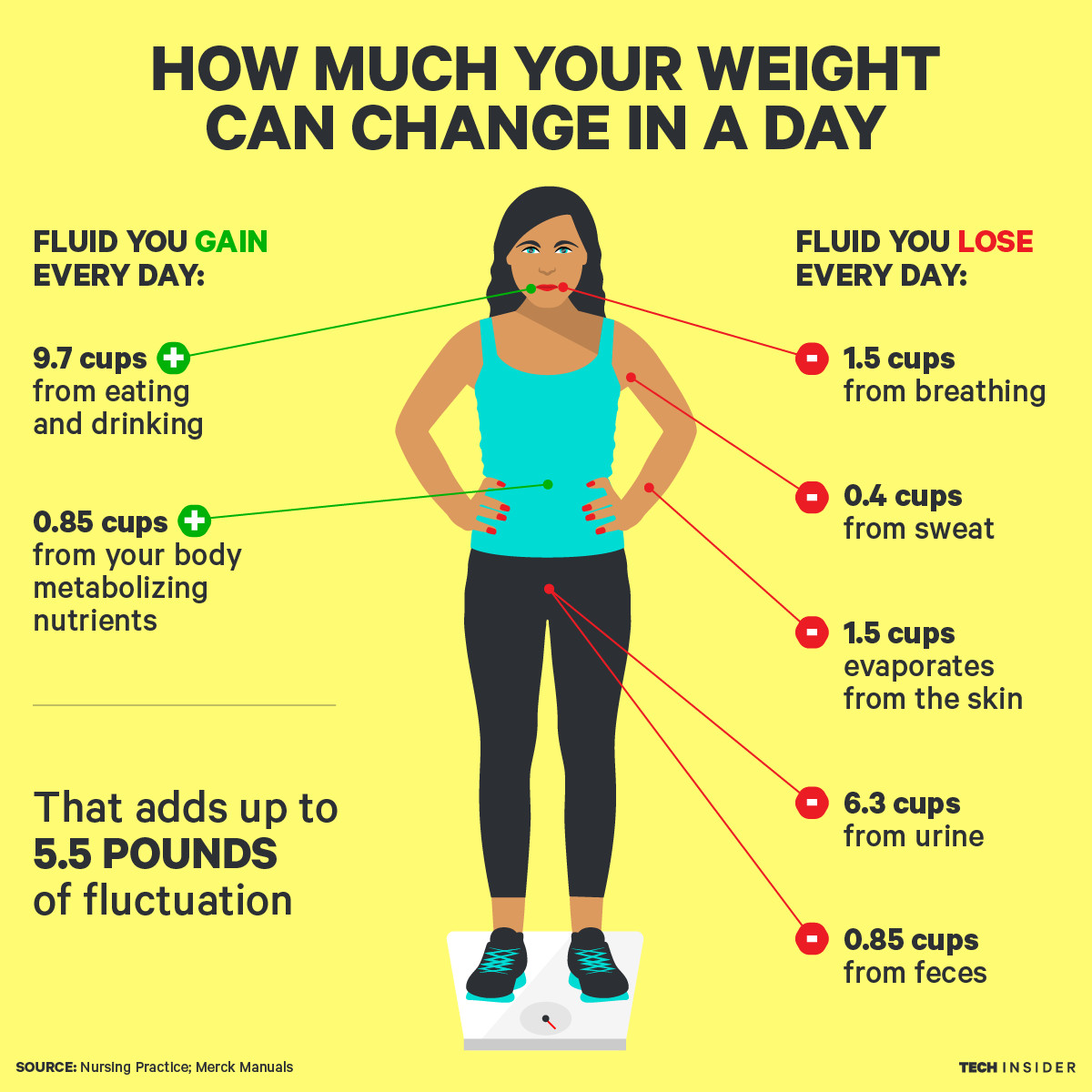
You’ve tackled the basics of dieting, but sometimes, a little expert guidance can make all the difference. Think of it as getting a personal trainer for your eating habits – they’ll help you stay on track and reach your goals.
Registered Dietitians: Your Diet Experts
Registered dietitians (RDs) are the superheroes of nutrition. They’re trained to provide personalized dietary advice based on your individual needs, goals, and health conditions. They can help you create a balanced and sustainable diet plan, address any nutritional deficiencies, and even help you navigate tricky situations like social events or eating out.
The Role of Your Doctor
Your doctor plays a crucial role in ensuring your overall health and well-being. They’ll assess your medical history, any existing conditions, and potential dietary restrictions. If you’re considering making significant changes to your diet, it’s essential to have a conversation with your doctor to ensure your plan is safe and appropriate for your individual circumstances.
Finding Qualified Professionals
Finding a qualified RD or doctor in your area is easier than you think. Here are some resources:
- The Academy of Nutrition and Dietetics:This organization has a searchable database of registered dietitians across the United States. You can find an RD who specializes in your specific needs, such as weight management, sports nutrition, or diabetes.
- Your Health Insurance Provider:Check your insurance plan for a list of in-network doctors and dietitians. This can help you save money on consultations and services.
- Online Directories:Websites like Zocdoc and Healthgrades allow you to search for doctors and dietitians in your area and read reviews from other patients.
Addressing Common Diet Myths
Dieting can be a minefield of misinformation, with numerous myths circulating that can derail your weight loss efforts and even harm your health. It’s crucial to separate fact from fiction to make informed choices and avoid falling prey to diet fads that promise quick fixes but often deliver disappointing results.
Fat-Free Foods and Their Impact on Health
The term “fat-free” often conjures up images of healthy choices, but the reality is more nuanced. While eliminating dietary fat entirely is not recommended, choosing fat-free options can be beneficial in moderation. However, it’s essential to understand that “fat-free” doesn’t necessarily equate to “healthy.”
- Manufacturers often compensate for the lack of fat by adding sugar or artificial sweeteners to enhance flavor, which can contribute to weight gain and other health problems.
- Fat plays a vital role in nutrient absorption, hormone production, and cell function. Eliminating it completely can lead to deficiencies and negatively impact overall health.
- Focusing on healthy fats, such as those found in avocados, nuts, and olive oil, is crucial for maintaining a balanced diet and supporting optimal health.
Fad Diets: Hype, Risks, and Alternatives
Fad diets often promise rapid weight loss with restrictive rules and limited food choices. While some may lead to short-term weight loss, their sustainability and long-term health implications are often questionable.
- Fad diets can lead to nutrient deficiencies, as they often eliminate essential food groups.
- They can create an unhealthy relationship with food, fostering restrictive eating habits and potential eating disorders.
- The weight loss achieved through fad diets is often temporary, as individuals tend to regain the lost weight once they revert to their regular eating patterns.
A sustainable and healthy approach to weight management involves making gradual lifestyle changes that include a balanced diet and regular exercise.
Effective Weight Management Strategies
Instead of falling for fad diets, focus on evidence-based strategies for sustainable weight management. These strategies prioritize a balanced diet, regular physical activity, and a healthy relationship with food.
- Choose whole, unprocessed foods like fruits, vegetables, lean protein, and whole grains.
- Control portion sizes to avoid overeating.
- Engage in regular physical activity for at least 150 minutes of moderate-intensity exercise or 75 minutes of vigorous-intensity exercise per week.
- Prioritize sleep, as insufficient sleep can disrupt hormones that regulate hunger and metabolism.
The Impact of Sugar on Weight Gain and Health
Sugar, particularly added sugars, is a significant contributor to weight gain and various health problems. Understanding its impact is crucial for making informed dietary choices.
Dieting doesn’t have to be a culinary prison sentence! Just remember, breakfast is the most important meal of the day, so make it count. For some delicious and healthy inspiration, check out these ideas for diet breakfast.
You’ll be surprised at how much you can enjoy while still sticking to your diet goals!
- Added sugars provide empty calories without essential nutrients, contributing to weight gain and increasing the risk of chronic diseases like type 2 diabetes and heart disease.
- Sugary drinks are a major source of added sugars, often consumed without awareness of their caloric content.
- Limiting added sugars in your diet is essential for maintaining a healthy weight and reducing the risk of chronic diseases.
Ultimate Conclusion
Dieting doesn’t have to be a punishment. It can be a journey of self-discovery, where you learn to nourish your body and fuel your soul. Remember, it’s about making sustainable choices that fit into your lifestyle, not about restricting yourself to the point of deprivation.
So, embrace the journey, celebrate your progress, and enjoy the delicious rewards of a healthier, happier you!
Q&A
Is it okay to skip meals while dieting?
Skipping meals can be counterproductive and lead to overeating later. It’s best to eat regular, balanced meals to keep your metabolism going and prevent cravings.
What are some good snacks for dieting?
Choose snacks that are low in calories and high in nutrients, such as fruits, vegetables, nuts, and yogurt.
How much water should I drink while dieting?
Aim for at least 8 glasses of water per day. Staying hydrated is crucial for overall health and can help you feel fuller.
Is it better to eat smaller meals more frequently or fewer larger meals?
Both approaches can be effective. Experiment to find what works best for you. Some people find that eating smaller meals more frequently helps them manage hunger and cravings better.















